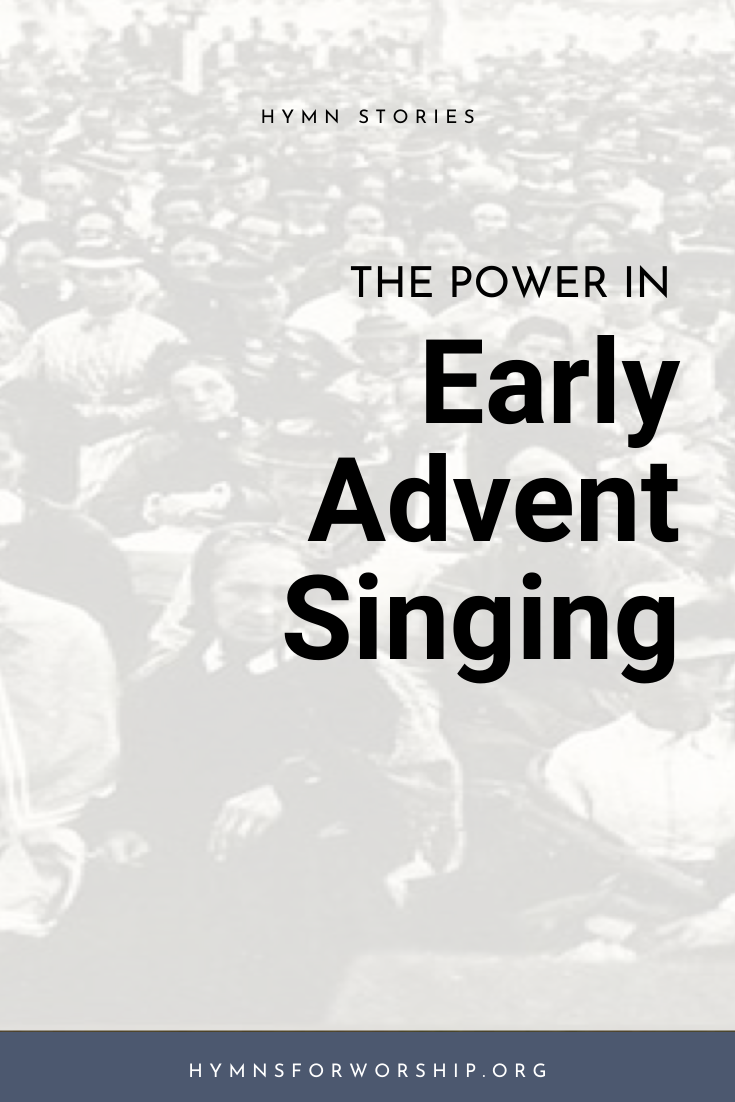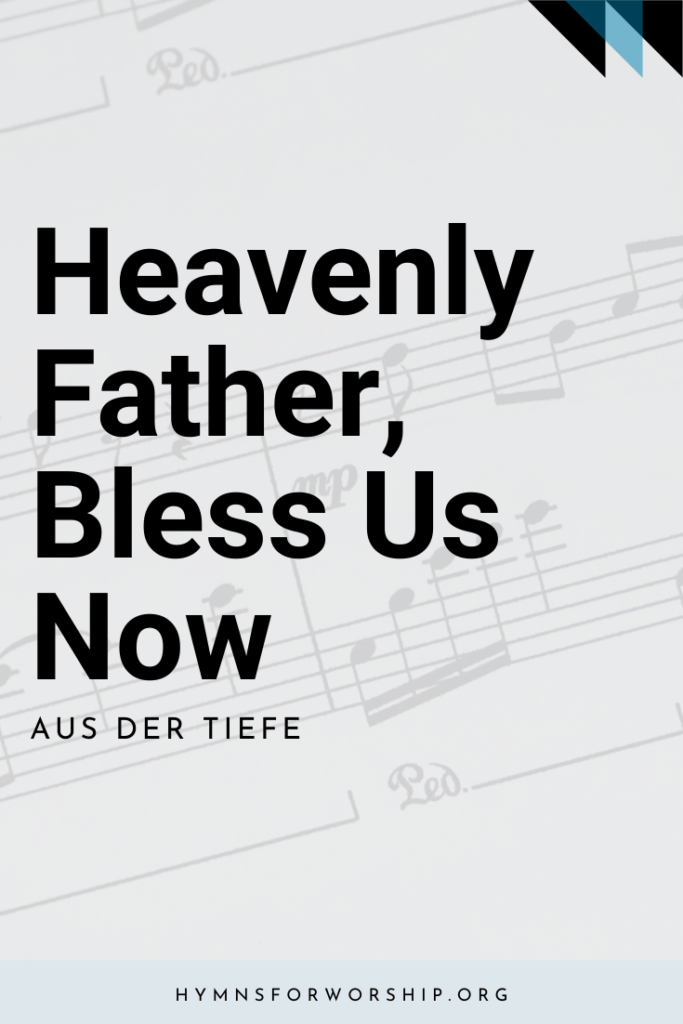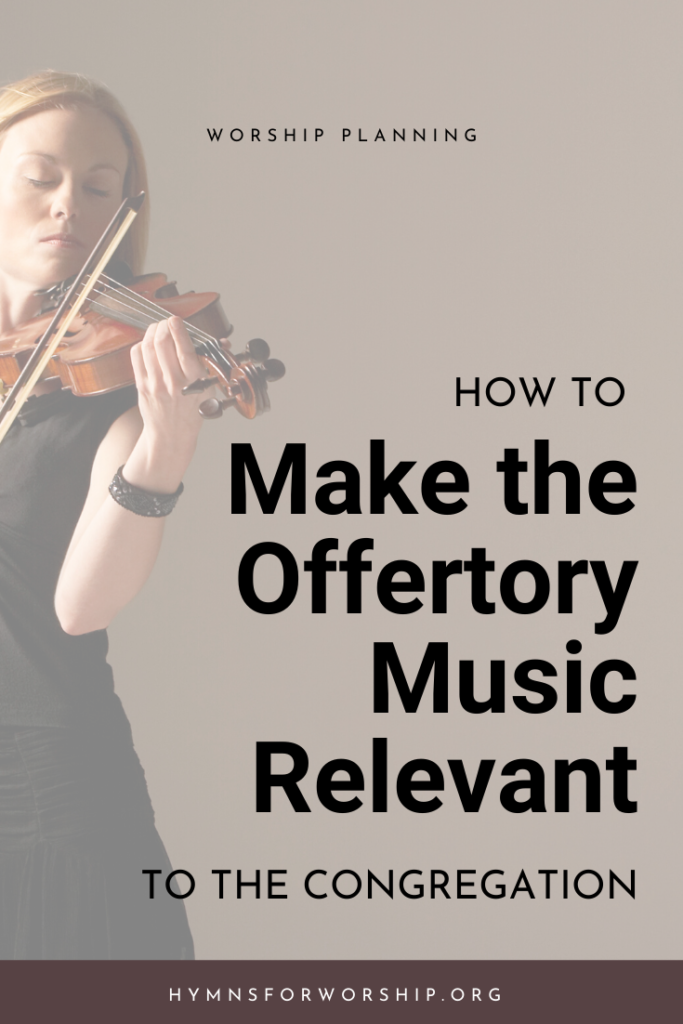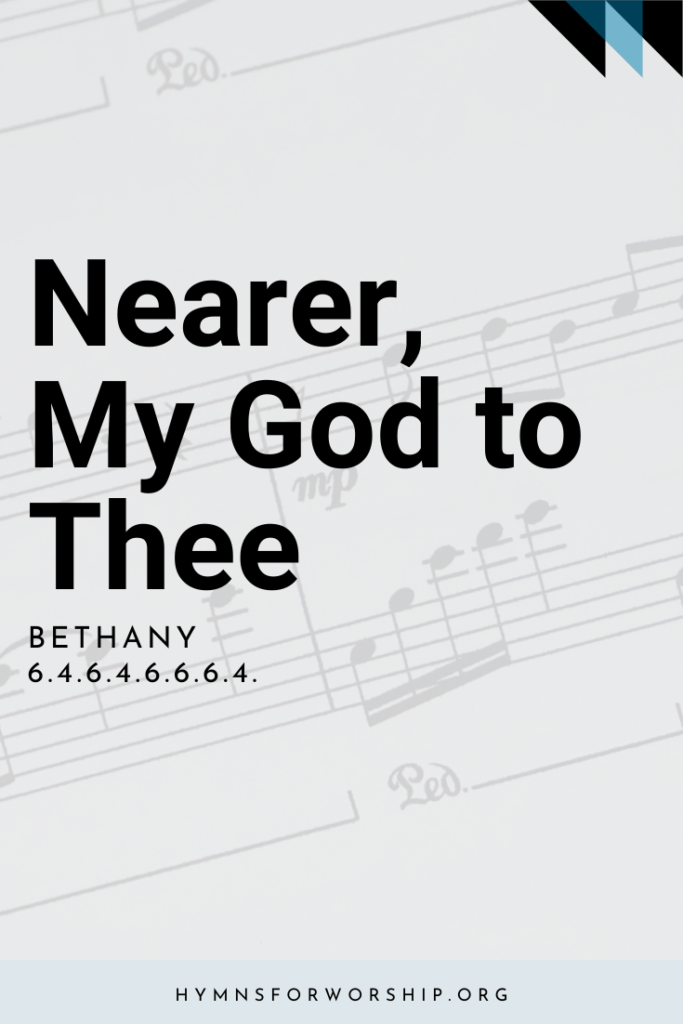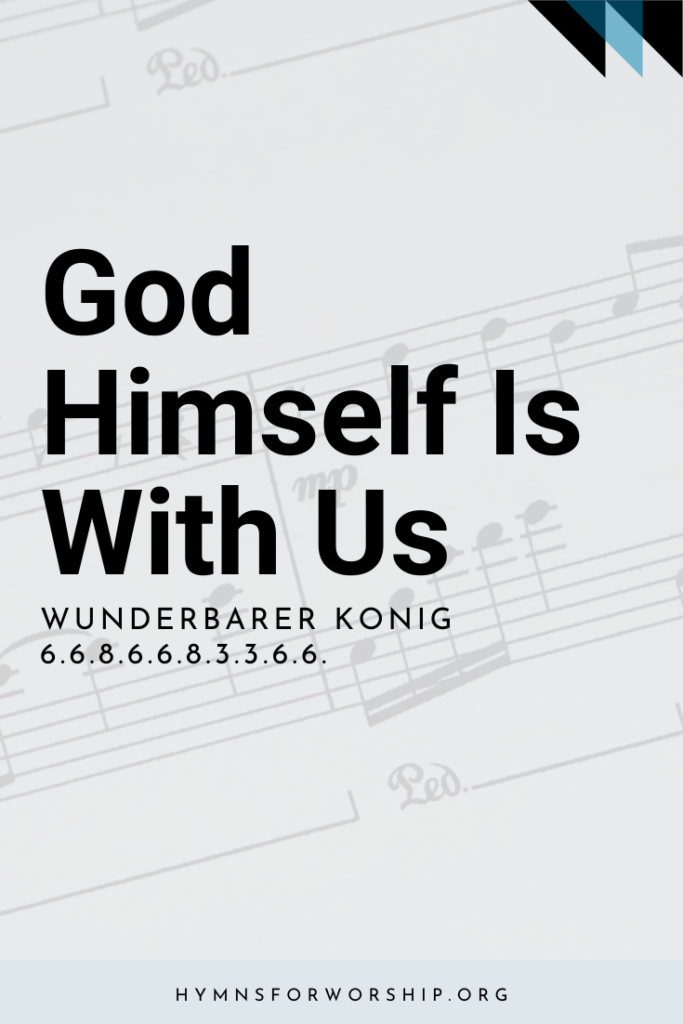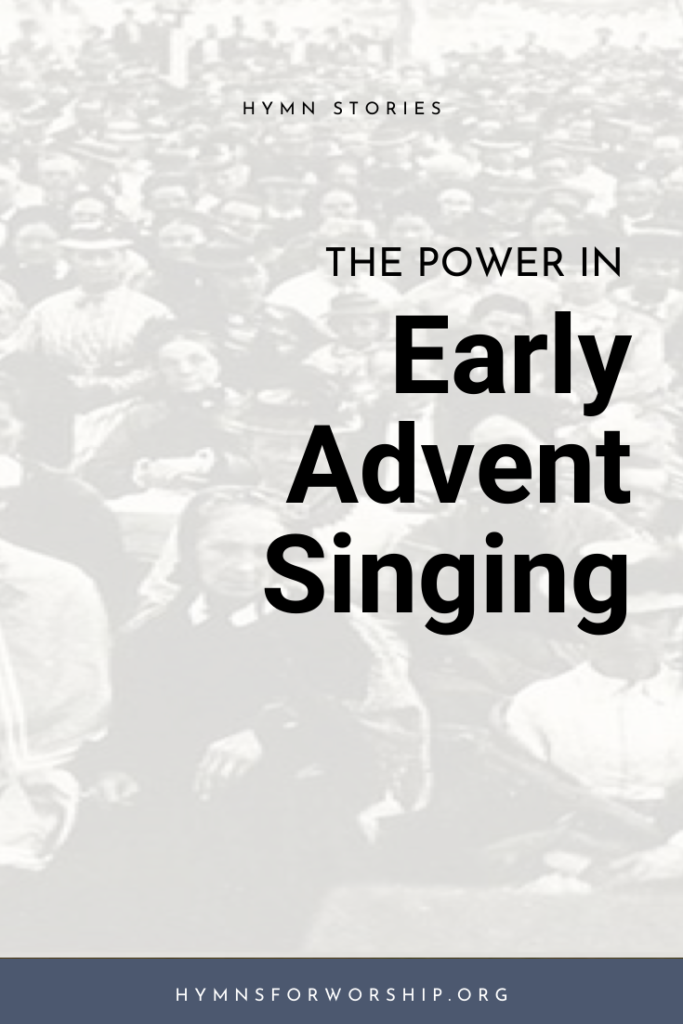
It was a time of great religious revival in America, or widely known as the Second Great Awakening. People were generally enthusiastic and emotional over religion, while Deistic ideas and rationalism brought on by Enlightenment were rejected.
William Miller, a New England farmer, former colonel and a staunch Deist decided to prove God by the study of His word. As his studies became deeper, he began to accept the truth that God loves Him and that He is not some Being that did not care about him or the world. He also believed that Christ’s coming was imminent, as his studies led him to an interpretation of Daniel 8:14. Reluctant at first, Miller decided to share his discoveries with the small churches in the countryside, close to his vicinity.
In one of those preaching appointments, he met the charismatic temperance activist and Christian Connection minister, Joshua V. Himes. This meeting proved to be a divine appointment, for soon Himes became the main organizer of Miller’s public appointments, particularly in the big cities.
Miller gained a huge following which came to be called, the ‘Millerites.’ Great Tent meetings were set up, and the progressing movement saw the need to provide new hymns.
Sure, they had songs that they were singing from the churches they belonged to, but none that supported the distinct messages that was being preached such as the judgment, second advent, reward of the saints and the midnight cry. As a result, hymns were compiled and the first Millerite hymnal was born.
Millerites’ singing of Advent hymns on the train converts 7,000
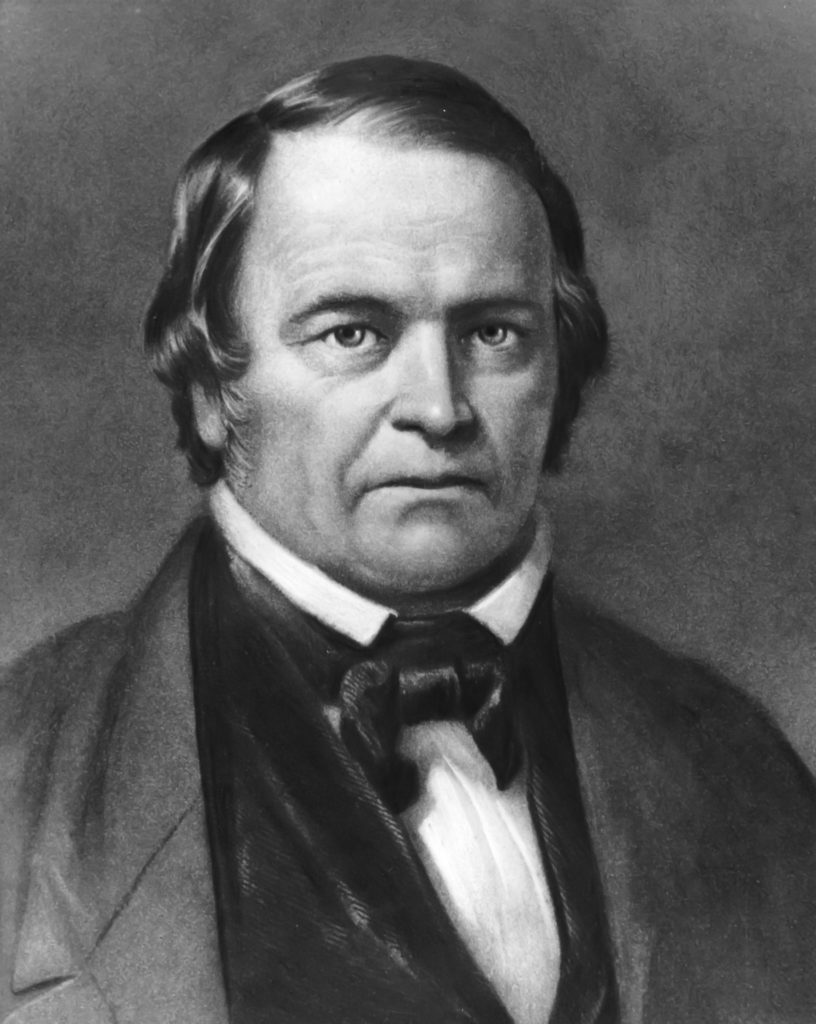

Himes reportedly compiled several hymnals. But the way the Millerites sang was another thing.
On one occasion, Joseph Bates, a Millerite who later became one of the co-founders of the Seventh-day Adventist Church, found himself, along with some other Adventists, forced to wait several hours in a train station in Salem, Massachusettes. The group filled the time while awaiting the next train by singing Advent hymns. This was something new to the people of Salem, who came out in crowds and seemed to listen with breathless attention. The singing caused enough interest that Silas Hawley, a preacher who had just accepted Millerism, was invited to preach on the subject the next Sunday. An estimated crowd of 7,000 turned out to hear him.
Of this preaching event Joseph Bates wrote in his Autobiography,
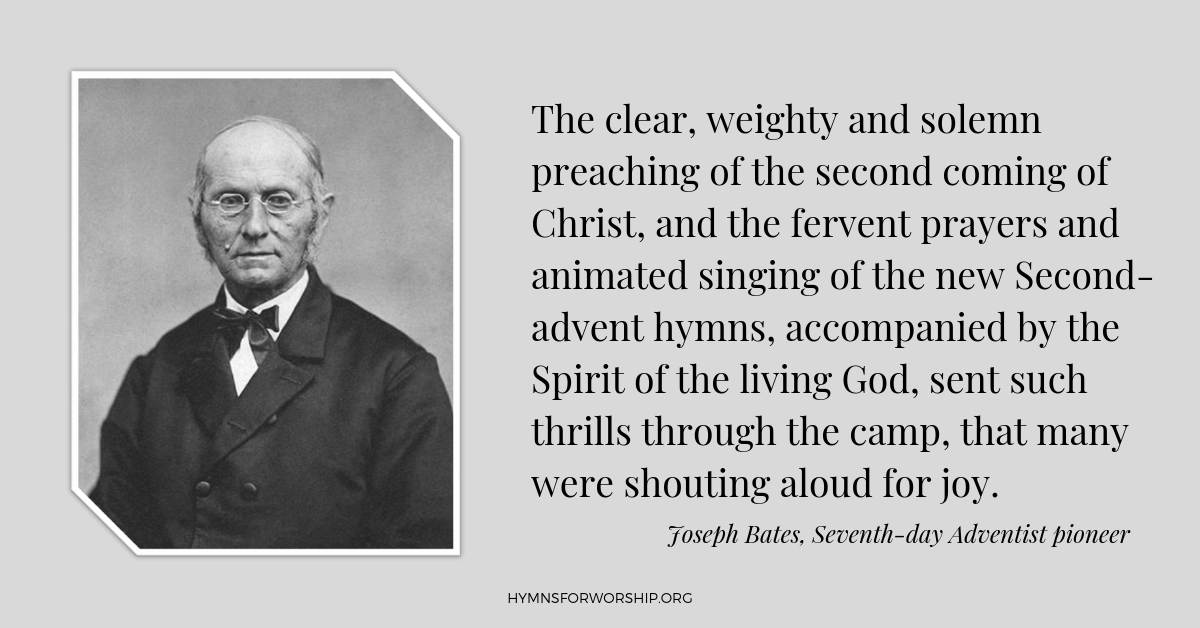
The congregation was emotionally moved during the worship service, and the response? Well Bates described that “While the committee were moving around in the congregation, receiving contributions to defray the expenses of the meeting, some of the sisters began to take out their ear rings and strip off their finger rings and other jewelry, which example was followed by many others; and all thrown into the contribution!”
Not a hand or a foot moved
James White, then a young minister would travel on his own and preach at churches. Also a musician with a confident singing voice, he would begin by singing the hymn, ‘You Will See Your Lord A-Coming’ while rhythmically tapping on his Bible. Of one occasion he described:
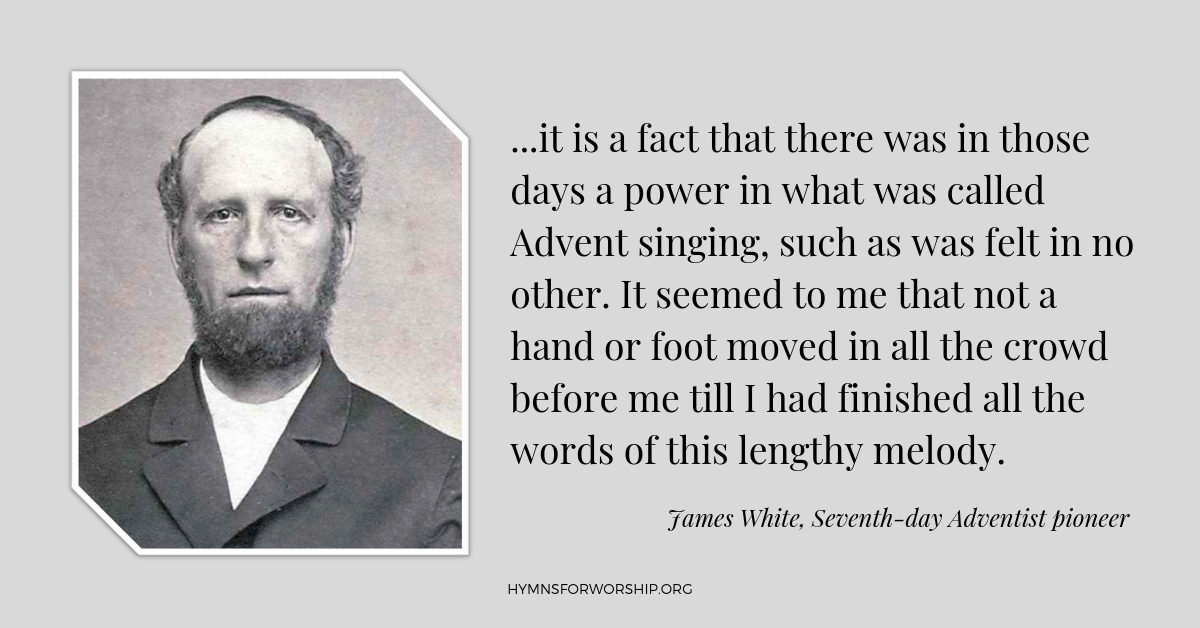
Excluded and called to trial for daring to sing Advent hymns
While this kind of singing drew thousands of people, it also solicited another kind of reaction. J.N. Loughborough, another eyewitness wrote in the book The Great Second Advent Movement:

Loughborough also wrote of what William Miller experienced when singing the Advent hymns: “It is most unnatural and unaccountable that the Christian churches should exclude this doctrine and their members for this blessed hope…I heard of some being excluded for ‘hymning’ second advent melodies; others for insanity, when all the insanity proved against them was, they were watching for Christ. O God, ‘forgive them, for they know not what they do.’ “ GSAM 175.2
More reasons to sing despite a disappointment
When the Lord did not come in 1844, many of these Millerite Adventists were very discouraged. Many gave up the faith yet a small handful continued deeper into Bible study. This resulted in their continued confidence in the imminent coming of Christ, without trying to set a specific date.
As the movement grew, the Sabbath-keeping Adventists began publishing hymnals that reflected the peculiarity of their doctrines. Beginning in 1849, James White published a hymnal Hymns for God’s Peculiar People, That Keep the Commandments of God, and the Faith of Jesus which drew heavily from Himes’ hymnals. Then editor of the Review and Herald, White would frequently advertise the need for new hymns composed by denominational musicians:
“We now invite all who have an interest in the new hymn book to send us good hymns, original and select. We want original hymns upon those subjects especially applicable to the present time.”
It was not in a haphazard way that these hymnals were compiled. As James White continued to update the hymnals, he was ever determined to be distinctive. As a preface to one of the hymnals he compiled, he wrote:
“Singing is an important part of the worship of God; and those who would worship him ‘in spirit and in truth,’ should seek to express truthful sentiments in all their songs of praise. As most Hymns sustain some one or more of the popular fables of the times, our task in selecting has been difficult…”
As the hymnody of the Seventh-day Adventists grew, contributions from Adventists poets and musicians such as Heman Gurney, Roswell Cottrell, Uriah Smith, Annie Smith and F.E. Belden were gladly received.
Lessons gained
As I contemplated on this, I wondered, why would James White say that ‘there was power in what was called Advent singing’? More importantly, with such a rich history behind me, what can I gain from the experience of the pioneers in Advent singing?
With some reflection, I came up with three lessons:
1. If I profess to believe in a certain creed or rule of faith, then the songs I sing or the music I listen to should also reflect that.
Great pains were taken by our pioneers to make sure that its congregation will sing songs appropriate to what they believed in. Which brings me to a more important point — As an Adventist, do I know what I believe in and stand for? From there, I am able to make choices in life that reflects such belief, whether it be music or other things that matter in my life.
2. Singing with full conviction has a powerful influence on those who listen.
What kind of singing is it when 7000 listeners are drawn and then result into baptism? What kind of singing is it that leads people to either curse you out and call you insane? The songs were sung full of assurance and certitude that anyone who listened were either positively drawn or pushed to retaliate strongly. Am I fully convicted of the songs I sing in worship and praise to God?
3. Singing songs appropriate to the occasion empowers the message.
Why was there a need for Joshua Himes to find hymns about the second advent? Why would James White spend his precious savings in printing hymnals? I think it is because they saw the appropriateness of having songs that equally talk about the messages that was being preached. And while these end-time sermons were preached from the pulpit, the hymns became a take-home message that the brethren were able to take wherever they were, in their work place, at home, or stuck in a train.
Ways we can revive the fervor of the early Advent singing
One thing that strikes me about the earliest Adventists was that they expressed their faith in the soon coming of Jesus through every medium known to them—preaching, teaching, literature, testimony, and music. The hymns sung by tens of thousands of Millerites in the months preceding October 22, 1844, are full of the longing and expectation seen in their relationships, their business dealings, and the earnestness with which they sought to convince unbelieving friends and family members of the need to prepare for Jesus’ return.
As Seventh-day Adventists of the modern and present age, do we resonate with our pioneers’ heart-cry? Do we sing hymns that reflect our excitement and longing for Christ’s soon return? Are our life choices and business dealings influenced by our firm belief on Christ’s soon return? Or have we lost the vision and content ourselves with the glitz and glamor of today’s ecumenical, exciting and emotional worship styles?
Perhaps it is timely to reflect on the immense riches of hymnody built by our pioneers and to be reminded of them at a time when they are at risk of neglect. Here are some ways we can do this:
1. Spend some time during the week learning the Early Advent hymns.
— Revisit the Early Advent section of the SDA hymnal and sing the hymns that might still be unfamiliar to you. Better yet, if you have the Companion to the SDA Hymnal, read the hymn description before singing the song so you can sing with understanding.
— Get a copy of James Nix’s Early Advent Singing and read the amazing stories behind the hymns that define the faith of Adventism.
2. Incorporate at least one early advent hymn in family worships
— Hymns for Worship is designed to help the Christian learn these unfamiliar songs. If you do not play the piano or even read notes, this website comes with an accompaniment so you can quickly catch up to the tunes. Don’t worry if you didn’t get it right the first time. The more you sing it, the more you will remember the tunes.
3. Sing and play it in church
— If you have the chance to be a song leader or the authority to influence song service in your church, take this as an opportunity to reintroduce these matterful hymns. Many times, as a pianist I would play it softly in the background before Sabbath School, or sometimes I would play it as a postlude. On these occasions, I always have several people come to me and say, “I really appreciate you playing our old Adventist hymns. It’s such a blessing to hear these songs again.”
4. Listen to it during the week
— True, there’s not a lot of recordings of Early Advent hymns out there. But that doesn’t mean it doesn’t exist either. Andrews University did an all acapella recording of many of these hymns. It was even recorded in the 1857 reconstructed meetinghouse in Battle Creek.
— Pillars Hymns Volume 2 features some of the hymns the pioneers loved to sing. Although somewhat less popular from the Pillars of Our Faith Volume 1, it has a lot of beautiful songs to offer recorded by 3ABN artists.
— If you want something in the meditative style, I would like to introduce to you the latest piano recording I did. Most of the hymns there are from the time of the Millerites and the SDA pioneers. Almost Home: Hymns on the Second Coming of Jesus is meditational and perfect for quiet and intimate worship moments.
5. Take a trip
— Visit the Adventist Heritage sites! Take your family and friends with you and relive the stories of the pioneers.
— If close to Andrews University, attend the annual Heritage Weekend held at Battle Creek where stories and songs are shared. You will leave the place inspired and revived as the stories of the pioneer come alive.
‘Repetition makes impression’ is a famous marketing strategy applicable to us today. How about letting the messages of the song that empowered the three angels’ messages during the greast second advent movement make an impression in our minds and hearts so that we may always experience the power of advent singing.

